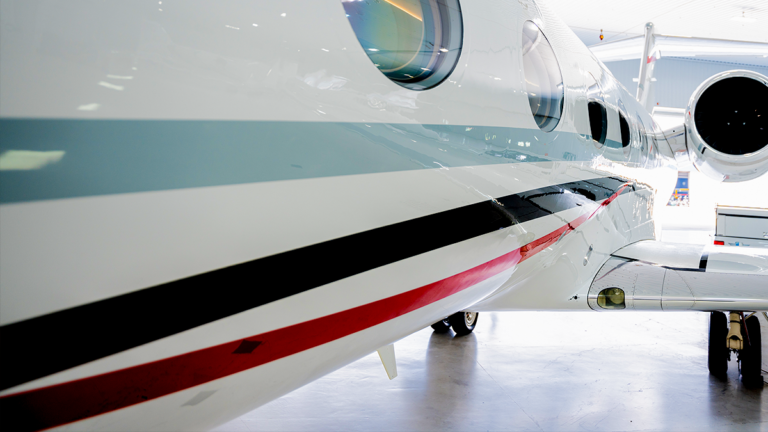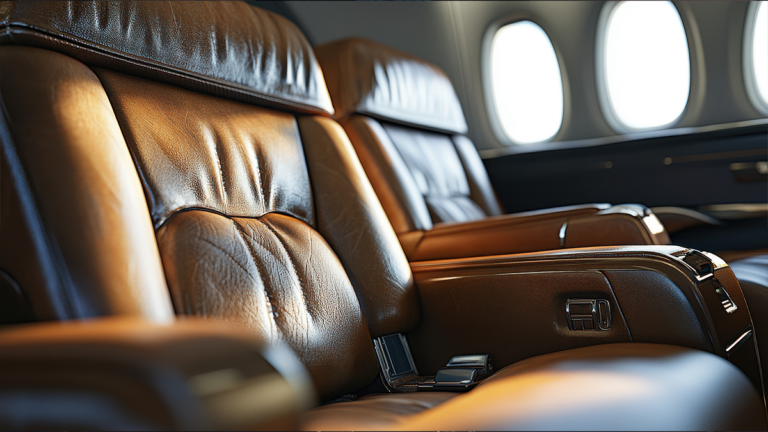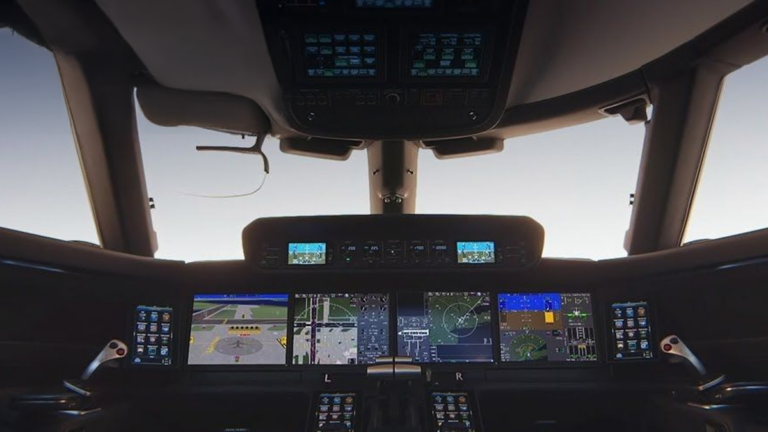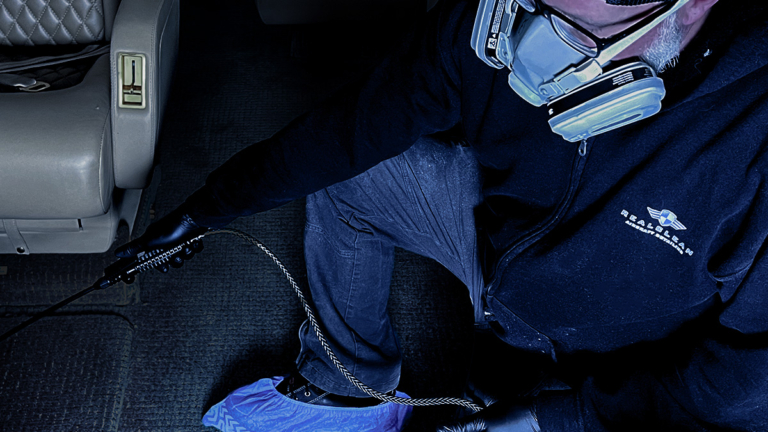“We’ve found corrosion on your aircraft.” Few phrases strike more fear into an aircraft owner’s heart.
As someone with extensive experience in aviation maintenance, I can tell you firsthand—corrosion is one of the most dreaded discoveries.
Instantly, questions flood the owner’s mind:
Where is it?
How serious is it?
How much will it cost?
For a mechanic, it’s also the conversation no one wants to have—especially knowing that in many cases, this nightmare could have been avoided with proper attention to the aircraft’s paint.
Diligent paint care isn’t just cosmetic; it’s a critical line of defense against corrosion. It helps aircraft owners avoid costly repairs, lengthy downtime, and depreciation in the resale market. With corrosion costing the U.S. aviation industry an estimated $2.2 billion annually, proactive paint maintenance is essential for minimizing expenses, reducing aircraft downtime, and preserving safety and value.
This article explores the vital role paint plays in protecting aircraft from corrosion, the benefits of paint revitalization services, and how protective coatings create a powerful barrier against wear and environmental damage.
The Role of Paint in Corrosion Prevention
Corrosion occurs when moisture, chemicals, or pollutants come into contact with exposed metal surfaces. This chemical reaction leads to oxidation, which weakens structural components and compromises the aircraft’s airworthiness. Aircraft are particularly vulnerable to corrosion due to the demanding environments in which they operate. Here are some of the most common environmental threats that aircraft face:
- UV exposure: Prolonged sun exposure causes paint to break down, crack, and fade, reducing its protective properties.
- Temperature fluctuations: Rapid changes in temperature cause expansion and contraction of the paint, leading to stress fractures and paint degradation.
- Insect impacts: High-speed impacts with insects during flight erode paint on leading edges, wing surfaces, and landing gear doors.
- Hydraulic fluids and oils: These chemicals can corrode metal and degrade the paint’s protective barrier if not cleaned regularly.
- Saltwater exposure and humidity: Aircraft operating near coastal regions face higher risks of corrosion due to salt-laden air and moisture.
- De-icing fluids: These chemicals, necessary during winter months, can corrode surfaces if not thoroughly cleaned.
- Exhaust residue and pollutants: Build-up from engine exhaust can cause paint to deteriorate and allow contaminants to penetrate the surface.
Without regular maintenance, paint chips, scratches, and worn areas expose the underlying metal to these elements. Even minor paint damage can quickly escalate into significant corrosion issues, impacting the aircraft’s safety, reliability, and market value.
Why Paint Revitalization and Protective Coatings Are Essential
Paint revitalization goes beyond improving the aesthetics of an aircraft—it restores the integrity of the paint, helping to extend its lifespan and improve its protective qualities. When combined with a high-quality ceramic coating, revitalization services provide a durable, long-lasting solution for keeping aircraft safe from corrosion.
Before & After Paint Revitalization
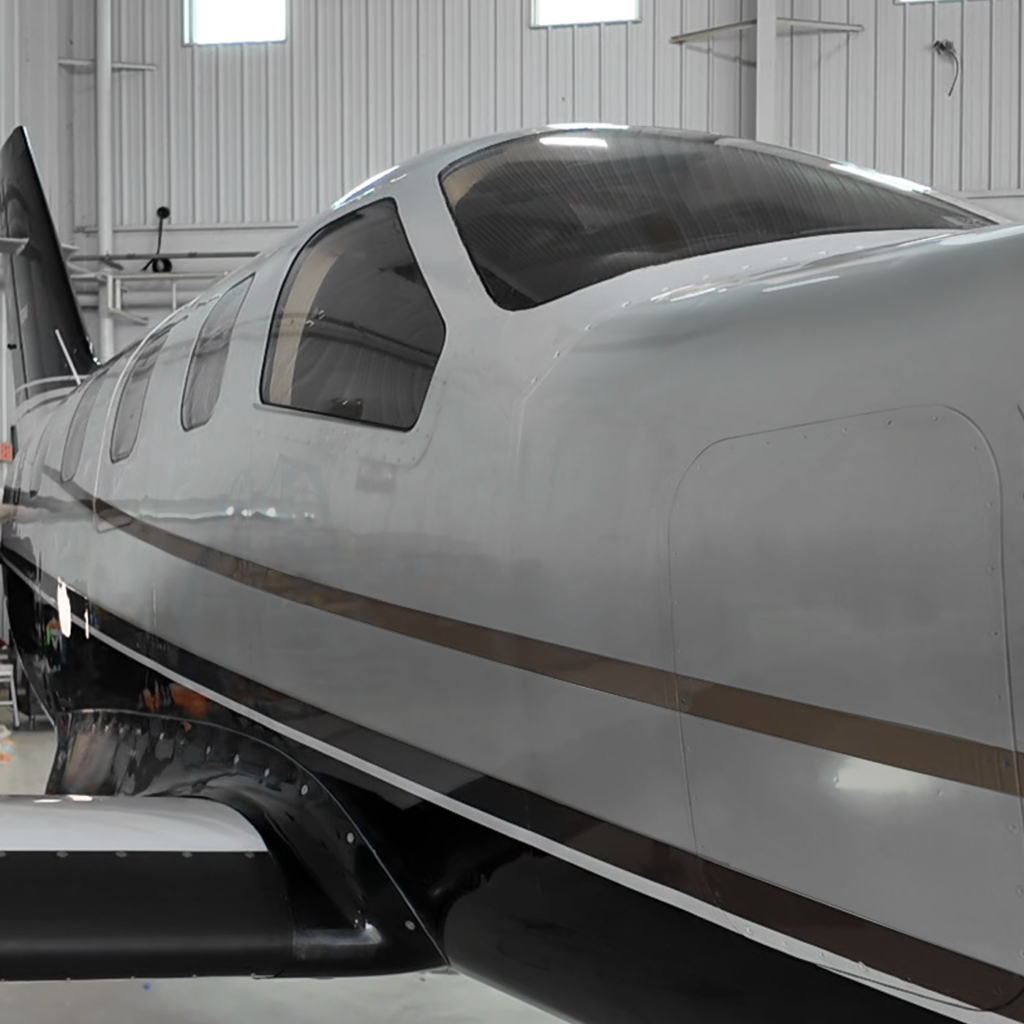
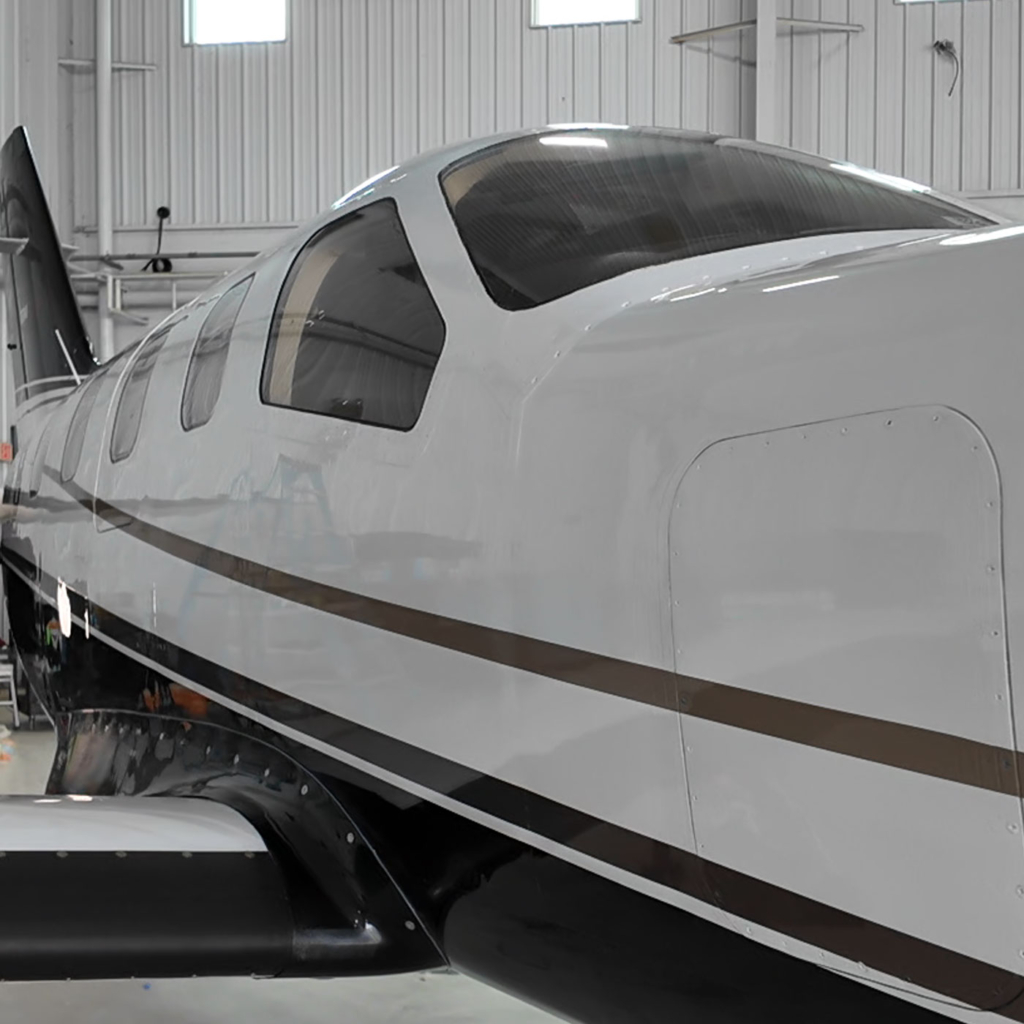
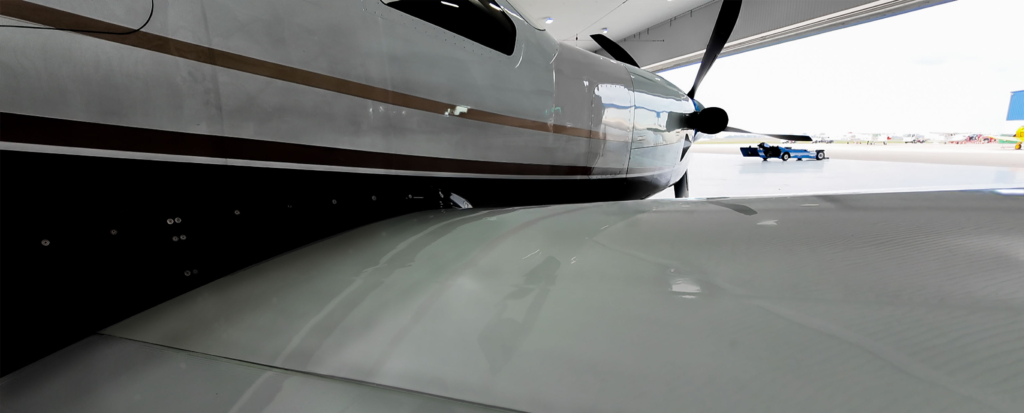
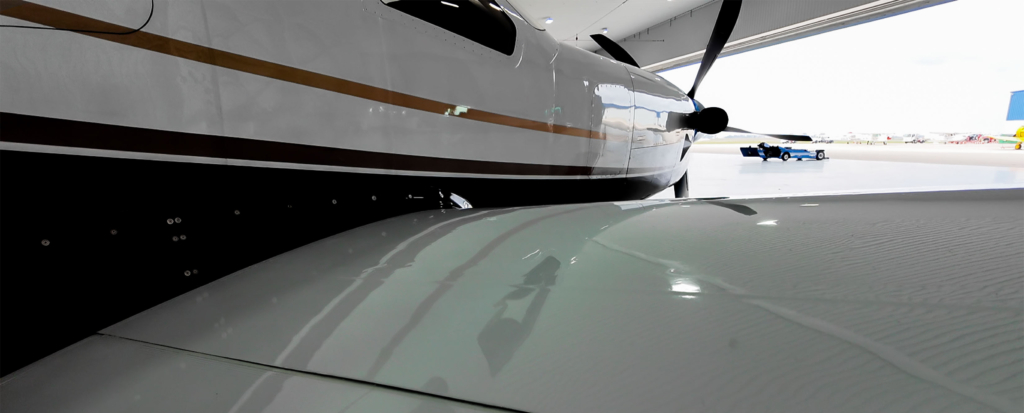
Benefits of Paint Revitalization and Ceramic Coatings
- Extended Paint Life:
A professional paint revitalization process can significantly increase the lifespan of your aircraft’s paint. When paired with an aviation-grade ceramic coating like Sapphire V1 by RealClean Aviation Products, the life of the paint can be more than doubled. This minimizes the need for frequent repainting, reducing long-term maintenance costs and downtime. - Protection from Environmental Contaminants
A ceramic coating creates a hydrophobic layer on the aircraft’s surface, repelling moisture, dirt, and pollutants. It prevents corrosive elements such as salt, chemicals, and exhaust residue from adhering to the surface, helping to protect the aircraft from oxidation and paint failure. - Simplified Cleaning and Maintenance:
A smooth, high-gloss finish provided by a ceramic coating reduces the frequency of cleaning. Contaminants are less likely to stick to the surface, which simplifies routine washing and reduces the amount of time the aircraft spends out of service. - Preservation of Resale Value:
An aircraft with well-maintained paint not only looks better but also retains its market value. A strong, vibrant finish gives buyers confidence that the aircraft has been well-cared for, improving its appeal during resale. - Professional Image and Brand Value:
For charter operators and corporate flight departments, a well-maintained aircraft projects professionalism and attention to detail. Clients are more likely to trust operators who demonstrate a commitment to safety and maintenance excellence.
How to Manage Paint Maintenance Effectively
Managing paint maintenance doesn’t have to be overwhelming. With the right strategies, aircraft owners and operators can integrate paint care into their regular maintenance schedules to prevent corrosion and ensure long-term performance.
Routine Inspections for Early Detection
- Visual Inspections: Regularly inspect the aircraft’s surface for chips, cracks, and areas where paint has begun to peel or degrade. Pay special attention to high-wear areas, including leading edges, wing tips, and landing gear.
- UV Inspections: Use ultraviolet (UV) lighting to detect hidden paint damage that may not be visible to the naked eye. Identifying these areas early helps prevent corrosion from spreading.
Timely Repairs and Touch-Ups
- Immediate Repairs: Fix minor paint chips and cracks as soon as they are detected. Even small areas of damage can allow moisture to penetrate the surface, accelerating corrosion.
- Keep Touch-Up Paint Handy: Having touch-up paint on hand ensures that quick fixes can be made between inspections, reducing the risk of damage spreading.
Invest in Professional Paint Revitalization Services
- Polishing and Sealing: Over time, oxidation can cause the paint to lose its shine. Professional revitalization services polish the surface, restoring the paint’s appearance and protective qualities.
- Ceramic Coatings: Applying a ceramic coating like Sapphire V1 adds an extra layer of protection, reducing the frequency of repainting and enhancing corrosion resistance.
Adapt Maintenance Strategies Seasonally
- Winter Preparation: Apply protective coatings before the winter season to shield surfaces from de-icing chemicals and extreme weather conditions.
- Coastal Operations: Aircraft operating near saltwater environments should undergo more frequent paint inspections and cleaning to prevent corrosion.
The Financial and Operational Impact of Corrosion
Neglecting paint maintenance can have serious financial and operational consequences. Corrosion not only leads to expensive repairs but also disrupts flight schedules and reduces an aircraft’s market value. Here’s a closer look at the impact:
- Increased Maintenance Costs: Repairing corrosion damage often requires stripping the old paint, repairing metal surfaces, and applying a new coat of paint—an expensive and time-consuming process.
- Operational Downtime: Aircraft grounded for corrosion repairs result in lost revenue for operators and charter companies. Preventative maintenance helps minimize downtime and keeps aircraft in service.
- Lower Resale Value: Aircraft with visible corrosion or poorly maintained paint are harder to sell and often require expensive refurbishment before they can be listed for sale.
By staying ahead of corrosion through regular paint revitalization and protective coatings, aircraft owners can avoid these pitfalls and ensure their aircraft remains in peak condition.
Partnering with Professional Detailing Services
Aircraft owners and operators don’t have to manage paint maintenance alone. Partnering with an experienced detailing service, like RealClean Aircraft Detailing, ensures that your aircraft receives the highest level of care.
- Expert Maintenance: Our team specializes in aircraft paint revitalization, ceramic coatings, and corrosion prevention, providing a comprehensive solution tailored to each aircraft’s needs.
- Convenience and Efficiency: We perform paint revitalization and coating applications during scheduled maintenance, minimizing downtime and ensuring the aircraft is always ready for flight.
- Enhanced Safety and Performance: By trusting professionals to maintain the paint’s integrity, owners can focus on flight operations with the confidence that their aircraft is protected.
Conclusion: Invest in Paint Care for Long-Term Value
Paint care is far more than a cosmetic concern—it is an essential part of corrosion prevention that protects the aircraft’s structure, ensures safety, and preserves value. Regular paint revitalization and the application of protective coatings offer a cost-effective way to extend the life of your aircraft’s paint, minimize maintenance costs, and safeguard resale value.
At RealClean Aircraft Detailing, our paint revitalization services combined with Sapphire V1 ceramic coatings provide the comprehensive care needed to protect your aircraft from corrosion and keep it looking pristine. With corrosion costing the aviation industry billions of dollars annually, proactive maintenance is a smart investment in your aircraft’s future.
When it comes to protecting your aircraft, remember: prevention is always better—and more cost-effective—than repair.


